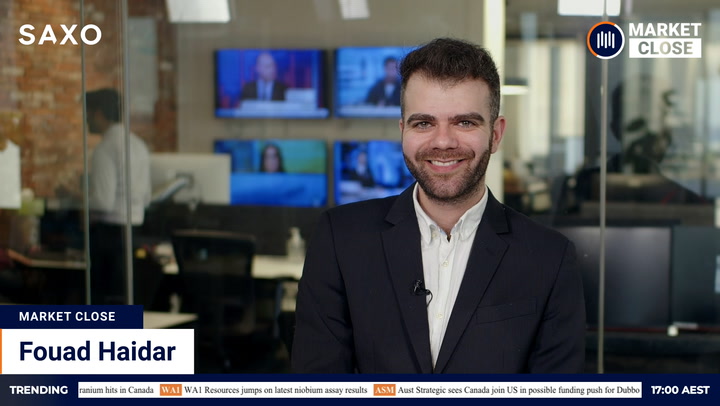This is perhaps the third or fourth consecutive year I have remarked, in some way or other, that the last 12 months have possibly been the weirdest on record.
I imagine I will say it again next year, and the year after that.
“Weirdest on record” might be phrased with more colour if you’re somehow involved with any of the five companies listed below.
Indeed, here are the ASX 200’s five worst performers during 2022, according to data from Market Index as of December 20.
5. Block Inc (ASX:SQ2) — down 48.88%
A year ago, the company formerly known as Square Inc. seemed the flavour of the moment.
News of its name change to Block in December 2021 — designed to distinguish the broader entity from its Square, Cash App, TIDAL and other businesses — came on the winds of fresh potential. As did its $39 billion acquisition of Afterpay and subsequent listing on the ASX in January.
Then, suddenly, things cooled down. Of course, the announcements kept coming — “TIDAL is now available in the UAE”, “Square introduces next generation of Square Stand”, “Square launches Tap to Pay on iPhone for US sellers” — but failed to bring the thumper new Australian investors might have been hoping for.
Financially, Block also seemed stable. In the third quarter of 2022, it posted a 38 per cent jump in gross profit to $1.57 billion, managed to cut its net loss to $15 million from $208 million the quarter before, and reported strong performances from both its Cash App and Square divisions.
And while those results generally beat analyst expectations, there seemed to hang the stink of … something else.
One recurring phenomenon this year was the repeated impairment losses tied to Block’s bitcoin holdings. The company hitched its wagon to the crypto train in 2018 by offering bitcoin trading to its Cash App users and has since then devoted considerable resources to that side of its business.
Indeed, this year in particular has not been kind to crypto investors (the European Central Bank called bitcoin’s most recent bounce “an artificially induced last gasp before the road to irrelevance”).
But it’s not as though Block’s holding is an active nuisance. Rather, it’s just been profoundly underwhelming. The company, which owns crypto on behalf of its customers, made just $37 million in profit from a total of $1.76 billion in sales during the third quarter.
4. Domain Holdings Australia (ASX:DHG) — down 49.32%
If crypto pundits had a rough time this year, those in the property sector didn’t fare much better.
Major rises in borrowing costs due to soaring inflation, as well as the residual effects of COVID-related site shutdowns, have seen a worrying number of construction firms collapse over the last 12 months. Such turmoil has been bad news for the likes of Domain Holdings — Australia’s second-largest property marketing platform.
In a trading update released earlier this month, Domain said the property sector “has remained challenging”, and that a minor listings bump of four per cent in the middle of the year had been followed by declines of 16 per cent in October and 22 per cent in November.
“December is experiencing an earlier than usual seasonal decline as agents and vendors defer listings into the 2023 calendar year,” the company said. “This trend contrasts with December 2021, when listings activity was unusually long, extending into late December.”
As a result, listings for the first 20 days of December were down roughly 51 per cent in Sydney and 37 per cent in Melbourne.
The good news? The worst of Domain’s exposure to macroeconomic madness is likely to be temporary. Smoother sailing has been forecast in the first half of 2023 thanks to new residential depth and upgrade contracts, growth at Domain Home Loans, and strong subscription trends in Agent Solutions.
3. Boral (ASX:BLD) — down 51.42%
Boral was not one of those construction firms to die this year, but its place on this list suggests it spent plenty of time in the same field of suffering.
Regardless, it’s been an interesting year for the building materials supplier. After selling off its North American assets in 2021 to focus on the Australian market, Boral appointed Vik Bansal as CEO in October — two months ahead of schedule.
Bansal’s early arrival was largely the work of Boral chairman Ryan Stokes and his father Kerry, whose Seven Group Holdings has been on a Boral-buying spree and now holds a 72.6 per cent stake.
The appointment followed a price hike — the largest in five years — to Boral’s cement, concrete, gravel, asphalt and sand products, which in turn followed out-of-cycle rises in January and February.
“What remains unknown at this stage is whether price rises will be enough to cover for the significant inflation we are continuing to face and whether this will give us real margin expansion within this fiscal year,” Bansal said at Boral’s AGM in November.
Elsewhere, perpetual wetness in the eastern states led to disruptions on building sites, while soaring fuel costs added further stress to Boral’s pursuit of better returns.
2. Reliance Worldwide Corporation (ASX:RWC) — down 54.35%
As one of the world’s largest suppliers of plumbing and heating products, Reliance Worldwide had been enjoying strong customer demand for the last two years — even in the face of COVID.
But by the middle of 2022, that momentum appeared to be waning. While the buyout of EZ-Flo International in November 2021 helped prop up declines in some markets, the debt-funded acquisition also blew Reliance’s net debt out to more than $551 million by the end of June.
Then there was the matter of higher costs. In its financial results for the year ending June 30, Reliance said it had implemented its own price increases, averaging 9.5 per cent across all key markets, aimed at minimising the effect of costlier materials.
“Rising costs associated with higher commodity prices for key materials including copper, zinc, resins and steel were experienced during the year together with higher costs for freight, packaging, energy and other cost inflation,” the company said.
While the move “substantially offset” those higher costs, it was dilutive to Reliance’s operating margins, dropping its adjusted EBITDA margin to 22.9 per cent from 26 per cent.
Nevertheless, the company expects cost inflation to be an ongoing challenge, potentially requiring further price adjustments.
1. Magellan Financial Group (ASX:MFG) — down 55.05%
Reaching the number one spot on the ASX 200’s Biggest Losers list takes some doing. Indeed, for Magellan Financial, 2022 wasn’t so much a year of ugly headwinds and bad luck, but rather an extension of prevailing misfortune.
While the Sydney-based funds manager had been dealing with underperformance since COVID-19 threw global markets into disarray in 2020, true pain arrived in December 2021 when Magellan lost the $23 billion investment mandate of St James Place.
The departure of the British wealth giant, which was worth around 12 per cent of Magellan’s annual revenue, led to a 33 per cent drop in Magellan shares and confirmed fading confidence in co-founder and then-chairman Hamish Douglass’ global fund.
Douglass then took leave in early February this year and never returned. In March, co-founder Chris Mackay stepped in to try and cultivate some stability, which Magellan appeared to still be chasing with the appointment of David George as CEO and Managing Director in May.
In July and November, the Douglasses banked more than $118 million by dumping two-thirds of their Magellan shares, despite previously saying “we have no intention to sell” and that they’re “totally committed to the business and its future”.
In keeping with the theme, Mr Mackay’s widely spruiked “downside protection” plan failed to materialise, and the generally accepted view is that 2022 hasn’t been particularly great for a company whose most essential asset is investor confidence.
In fact, much of Magellan’s outflows have been from Douglass’ global equities strategy, whose funds fell to $25 billion from $86 billion, and the company itself saw funds under management fall from $116 billion to $50 billion in 12 months. (Some of these issues had been flagged as far back as 2018 by consulting firm Mercer, which cited “significant risks to performance expectations” and Mr Douglass’ “somewhat unnerving” dominance over the investment process.)
2022: Annus horribilis
So, yes … When 2022 was handing out blows, it did not do so in equal measure for all.
But bear in mind there are more than 2300 companies listed on the ASX, collectively worth almost $2.3 trillion. And some of them performed much, much worse than the five above.
BWX Ltd, for example, which deals in natural beauty products and is a long way off making it to the ASX 200, holds the unenviable title of Overall Loser, having seen its shares drop 96.5 per cent this year. White Energy Company also lost 95.38 per cent, while 13 other listed companies notched share price declines in excess of 90 per cent.
So there are plenty who will be glad to see the back of 2022. What, for the love of God, will 2023 bring?








